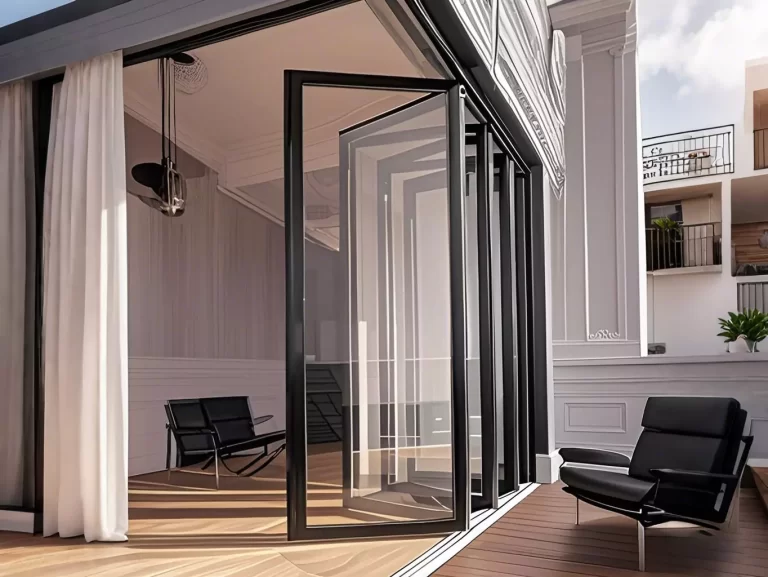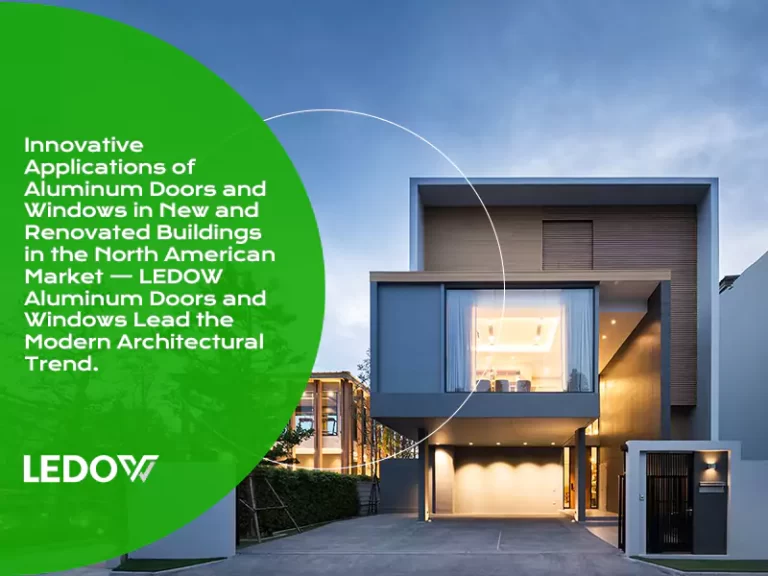Whilst taking into account the choice of windows in your residence, the pivotal attention revolves around energy performance. choosing energy-green windows no longer simplest holds the ability to markedly curtail your strength expenses but additionally ensures consistent domestic comfort in the course of the 12 months. these days, there has been a burgeoning hobby in aluminium windows due to their streamlined aesthetics and strong longevity. but, the pressing inquiry remains: do aluminium windows surely meet the criteria for strength efficiency? let us delve deeper into this inquiry.
Electricity performance is critical
earlier than delving into specifics, it’s miles vital to underscore the criticality of power efficiency. in line with findings from the energy Saving trust, a large 26% of heat dissipation from dwellings happens through windows and doors. by means of integrating electricity-green home windows into your home infrastructure, you could successfully mitigate warmth loss, diminish your carbon footprint, and, unequivocally, gain extensive savings to your energy outlays.
The Composition and traits of Aluminium home windows
produced from the resilient and lightweight steel referred to as aluminium, those home windows are renowned for his or her sturdiness, minimal maintenance necessities, and flexibility in design. cutting-edge iterations of aluminium home windows embody an collection of styles along with casement, sliding, sash, and tilt and flip.
The electricity efficiency Profile of Aluminium home windows
historically, aluminium home windows continued complaint for their lackluster power efficiency. but, advancements in generation, appreciably the advent of thermal break era, have markedly reinforced their thermal performance.
Benefits of power-efficient thermal ruin aluminium Aluminium home windows
making an investment in power-efficient aluminium home windows boasting superior power rankings proffers a plethora of advantages:
appreciably reduced strength bills: via curtailing heat exchange, these home windows decrease dependency on heating and cooling systems, thereby translating into tangible reductions in software fees.
Augmented Thermal comfort: steady indoor temperatures are assured at some point of various seasons, making sure warm temperature throughout winters and coolness amid summer’s swelter.
Mitigated Condensation: the mixing of low-emissivity (low-E) glass inside energy-green models inhibits condensation with the aid of preserving expanded temperatures on inner glass surfaces.
Sound Abatement: The incorporation of double or triple glazing within strength-efficient aluminium home windows serves as an powerful barrier against external noise, thereby improving acoustic insulation within the domicile.
reinforced safety features: Aluminium’s inherent robustness is complemented by energy-green capabilities that enhance domestic security, making sure tranquility and safety.
Enduring durability: Withstanding inclement climate conditions with out succumbing to warping, cracking, or fading, aluminium endures as a stalwart material choice. strength-efficient aluminium windows, therefore, promise prolonged service life, marking a sustainable enhancement for domestic improvement projects.
Environmental benefits: by mitigating strength intake, these home windows make contributions decisively to dwindled carbon footprints. choosing sustainable substances and practices paves the way for a extra ecologically conscientious destiny.
Aesthetic Versatility: available in an array of hues and finishes, aluminium home windows harmonize seamlessly with various architectural styles, enriching both interior and outside visible enchantment.
Drawbacks of power-efficient thermal break aluminium Aluminium home windows
while thermal smash aluminum home windows provide severa benefits, it’s critical to keep in mind ability drawbacks:
initial value: Thermal smash aluminum windows may have a higher upfront fee compared to traditional aluminum windows. however, their lengthy-time period power financial savings and sturdiness often justify the initial funding.
installation Complexity: putting in thermal smash aluminum windows may require professional knowledge due to their specialized layout and production. proper installation guarantees finest overall performance and power performance.
Get an Thermal Break Aluminum Windows Quote For Your Home →
Power efficiency of Thermal break Aluminum home windows
Now, allow’s delve into the factors influencing the electricity performance of thermal break aluminum windows:
Thermal overall performance
Thermal spoil aluminum windows excel in thermal overall performance compared to conventional aluminum windows. The thermal barrier effectively reduces warmness switch thru the body, minimizing warmth loss in winter and warmth gain in summer time. This outcomes in greater constant indoor temperatures and decreased reliance on heating and cooling structures.

Insulation residences
The thermal barrier in thermal ruin aluminum windows acts as a distinctly powerful insulator, supplying advanced insulation compared to traditional aluminum home windows. This insulation enables create a thermal barrier that prevents out of doors temperatures from affecting indoor comfort, ensuing in advanced strength performance and lower software expenses.
Air Sealing
well installed thermal break aluminum windows offer excellent air sealing residences, minimizing drafts and air leakage. Tight seals and weatherstripping around the window perimeter prevent outside air infiltration, enhancing strength performance and indoor comfort. additionally, more than one panes of glass and 86f68e4d402306ad3cd330d005134dac seals in addition make a contribution to air sealing and strength financial savings.
Renovation and durability
Thermal wreck aluminum home windows require minimum protection and provide long-term sturdiness, ensuring sustained strength efficiency over their lifespan. ordinary cleaning and inspection of seals and weatherstripping assist hold ideal overall performance and power performance. Their resistance to corrosion, moisture, and environmental elements ensures lasting energy savings and minimum protection necessities.
Comparative evaluation with opportunity Window substances
To assess the power efficiency benchmarks of thermal spoil aluminium windows, allow’s juxtapose them with opportunity materials:
Thermal ruin Aluminium vs. Vinyl home windows
Vinyl windows are acknowledged for his or her affordability and commendable power efficiency. despite the fact that, thermal wreck aluminium windows surpass them in durability and structural integrity. The thermal barrier inside aluminium home windows augments their insulation abilties, rendering them advanced in warmth retention. moreover, thermal wreck aluminium home windows provide tremendous layout flexibility, accommodating diverse aesthetic preferences past the scope of vinyl home windows.
Thermal break Aluminium vs. timber windows
wooden home windows exude timeless allure but call for more upkeep in comparison to thermal ruin aluminium home windows. whilst timber windows confer herbal insulation blessings, thermal damage aluminium home windows surpass them in strength efficiency and robustness. moreover, thermal ruin aluminium windows are impervious to rot, moisture, and insect incursion, positioning them as a low-maintenance alternative to wood.
Thermal destroy Aluminium vs. Fiberglass home windows
Fiberglass home windows epitomize high energy efficiency and durability, rivaling the blessings of thermal destroy aluminium home windows. though, thermal destroy aluminium windows present a more modern-day aesthetic and offer advanced design adaptability. each alternatives deliver commendable power performance and sturdiness, empowering owners to pick based on man or woman possibilities and economic issues.

Enhancing energy efficiency of Thermal break Aluminium windows
To optimize the energy efficiency of thermal wreck aluminium windows, don’t forget implementing the subsequent techniques:
excessive-overall performance Glazing:choose double or triple glazing supplemented with low-emissivity coatings to fortify insulation and energy efficiency.
professional installation: interact talented specialists to make sure specific installation, augmenting air sealing skillability and thermal performance.
everyday upkeep:robotically hold seals, weatherstripping, and hardware to preserve strength performance and protract the carrier lifestyles of thermal destroy aluminium windows.

In summary, thermal break aluminium windows epitomize a compelling synthesis of energy efficiency, durability, and aesthetic versatility. Propelled by means of advanced insulation attributes and minimal maintenance exigencies, they turn out to be a superlative choice for homeowners aspiring closer to enduring strength savings and indoor comfort. through comprehending their attributes, blessings, and issues, owners could make nicely-informed selections aligned with their home enhancement desires and electricity conservation imperatives. Embracing thermal wreck aluminium home windows augurs superior power performance, ensuring sustained consolation and operational excellence within residential environments.
We manufacture and sell Thermal smash Aluminum windows due to the fact we agree with they provide the most price of any material.
Start enjoying the benefits of LEDOW Thermal Break Aluminium Windows today.










